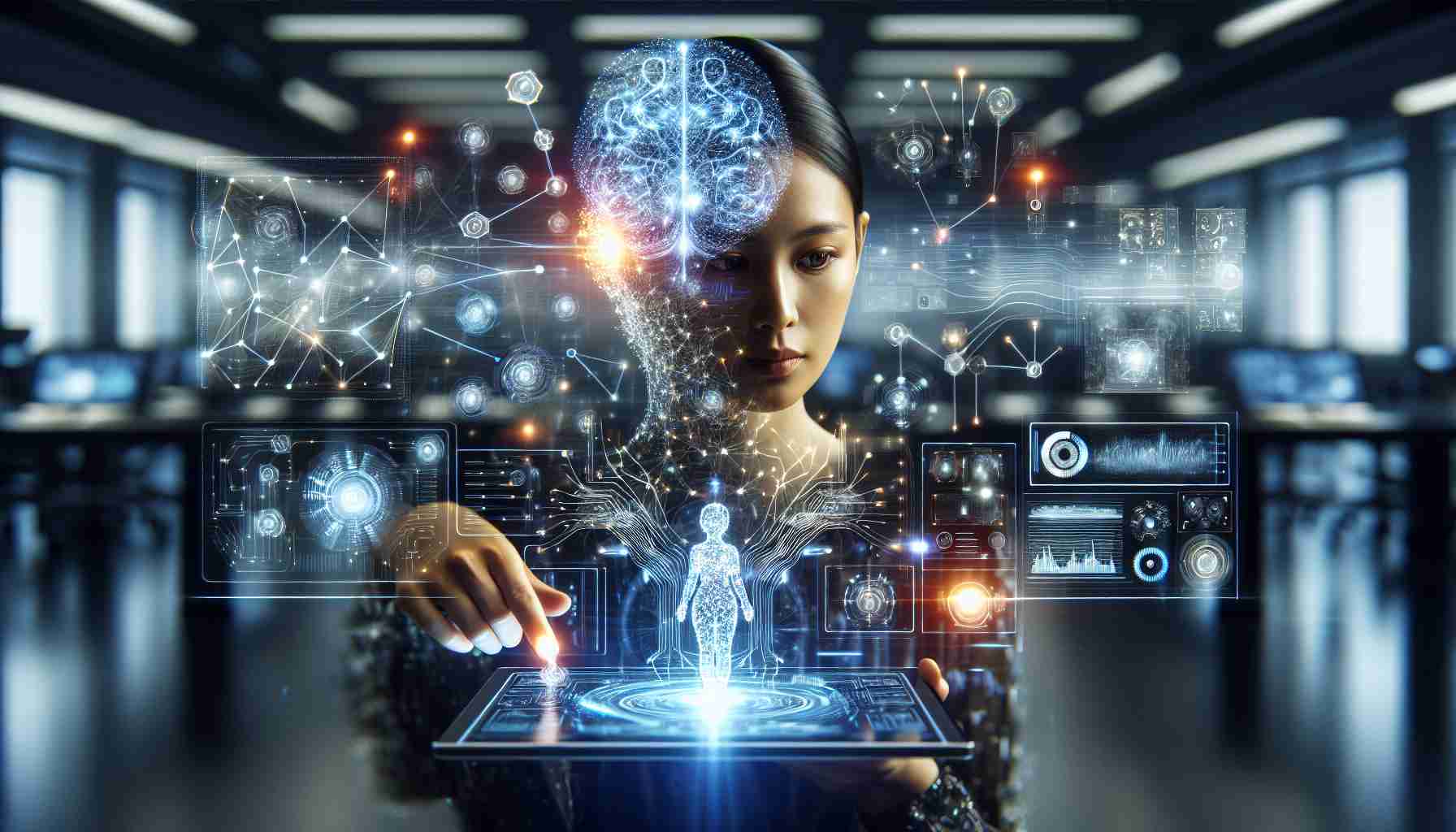The Evolving Paradigm of Content Creation and Development
Artificial Intelligence (AI) is revolutionizing our interactions with technology, ushering in a new era of work, creativity, and content development. This shift necessitates the acquisition of new skill sets to harness the potential of AI effectively.
Transitioning from Deterministic to Stochastic Models
The integration of generative AI has led to a significant transformation in the way humans interact with machines. We are witnessing a departure from a deterministic approach, which relies on specific commands to yield unique outcomes, to a stochastic or conversational model where results may vary but are essentially equivalent. These outcomes are produced through complex statistical calculations made by algorithms, offering a level of variability and uniqueness that is challenging to replicate.
Enhancing Communication and Strategy with AI
Placing natural language communication at the forefront means that strategies for working with AI must be rethought, both in educational and professional contexts. It is now critical to craft clear, unambiguous instructions, critically assess AI-generated results, apply logical reasoning through language mastery, and guide conversations to achieve desired outcomes.
Navigating the Risks of Reliance on AI
With AI’s ability to generate texts, summarize articles, create images, analyze data, or produce code sequences from simple verbal requests, comes inherent risks. One significant concern is the potential loss of human control over work processes and quality of output. Delegating higher-order thinking skills to AI could result in a gradual neglect of these abilities among humans.
Bloom’s Taxonomy in the Age of AI
To counterbalance this, modern perspectives argue for a more active and expert role for individuals using AI tools, leading to the development of specifically tailored AI-related competencies. An updated version of Bloom’s Taxonomy has been proposed, reflecting the need to maintain all cognitive abilities, particularly higher-order ones. This taxonomy now includes tasks like designing complex instructions, integrating unexpected findings, and countering biases through natural language usage.
The AI as an Assistant
Comparing AI to a human assistant highlights the significant responsibility we have in ensuring the quality of the work. Utilizing AI effectively means applying creative skills to conceive the final product, planning work processes, evaluating intermediate results, making decisions during the process, and providing guidance for collaborators.
Critical Thinking Amidst AI Integration
To manage these complex tasks, a high level of expert knowledge must be coupled with continuous critical thinking. Keeping a critical eye is vital to evaluate the machine-offered solutions, especially when AI can deliver plausible but not necessarily human-reasoning-based outcomes. This skill is crucial for informed decision-making and avoiding biases, with a strong focus on analysis and evaluation as top-tier skills within the updated Bloom’s Taxonomy. Students and professionals must learn to critically engage with AI, taking charge of the creation process and being accountable for the results.
Key Questions and Answers:
– What are the most important skills needed to interact with AI in content creation?
Individuals need to acquire new skills such as crafting clear instructions, critically evaluating AI-generated results, applying logical reasoning and language mastery, and guiding conversations to achieve desired outcomes.
– What are the potential risks of relying too heavily on AI?
There is a risk of losing human control over work processes and the quality of outputs, as well as the neglect of human higher-order thinking skills because of over-delegation to AI.
– How does Bloom’s Taxonomy relate to the use of AI?
Bloom’s Taxonomy has been updated to reflect the skills required for effective AI use, emphasizing the maintenance of higher cognitive abilities and including tasks like designing complex instructions and integrating findings critically.
– How can one ensure the quality of work when using AI as an assistant?
It involves applying creative skills to envision the final product, planning work processes, evaluating intermediate results, making informed decisions, and providing guidance throughout the process.
Key Challenges and Controversies:
The role of AI in human-technology interaction involves several challenges and controversies:
– Ethical Implications: There are ethical questions related to AI’s impact on job displacement, privacy concerns, and data biases that can lead to inequality.
– Reliability and Trust: People may question the reliability of AI-generated content and how much trust can be placed in outputs.
– AI Sophistication: As AI becomes more sophisticated, discerning between human-generated and AI-generated content becomes more challenging, raising authenticity issues.
– Regulation: The lack of clear regulations and guidelines regarding AI’s use can lead to misuse or unanticipated consequences.
Advantages and Disadvantages:
Advantages:
– Efficiency: AI can perform tasks faster and more efficiently than humans.
– Creativity: AI can inspire new forms of creativity and content generation.
– Analysis: AI can analyze large data sets, identifying patterns beyond human capability.
– Accessibility: AI can make technology more accessible through natural language processing and personalization.
Disadvantages:
– Dependency: Over-reliance on AI can erode human skills and expertise.
– Unemployment: AI integration could lead to job displacement in certain sectors.
– Opacity: AI decision-making processes can be opaque, leading to trust issues.
– Bias: AI can inherit or even amplify existing biases in the data it learns from.
For those interested in further exploration of AI’s impact on human-technology interaction, reliable sources of information could include the official pages of leading AI research institutions or industry leaders in AI technology. For example, you may visit:
– Association for the Advancement of Artificial Intelligence (AAAI)
– DeepLearning.AI
– OpenAI
– NVIDIA
Please note that the inclusion of a hyperlink to a main domain assumes the URL provided is 100% valid as of my knowledge cutoff in 2023.

